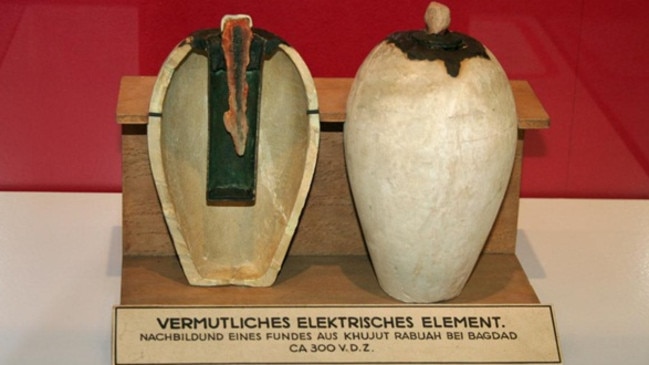Baghdad Battery
- Get link
- X
- Other Apps
Baghdad Battery

When we think of electricity, most of us recall back to a time in school where we learned about Benjamin Franklin, a metal key, and a kite. The year of Franklin’s fateful discovery was 1752.
But the existence of the Baghdad batteries suggests the possibility of far more shocking scientific advances in the field — a mind-blowing 2,000 years earlier. Discovered in 1936, and thought to have been created in the Mesopotamian region, these clay pots contain galvanised iron nails wrapped with copper sheeting, and some archaeologists theorise that an acidic liquid was used to generate an electric current inside the jar.
If correct, these artefacts would predate the currently accepted timeline for the invention of the electrochemical cell, attributed to Alessandro Volta, by more than two millennia.
Whether or not the artefacts were in fact used as batteries is highly contested by archaeologists, and what the resulting electrical current was used for is also a complete mystery, as we have no historical records from that time.
Some people theorise that they might have been used for electroplating objects, but such evidence of their use for that purpose is yet to be found.
What we do know, however, is that the batteries would actually work, at least in theory.
At least twice, experiments were conducted to test replica constructions of the batteries, including once on the show Mythbusters, and both experiments showed that the batteries were indeed capable of producing electricity when filled with an acidic solution. But for now, the true purpose of these artefacts remains unknown.
- Get link
- X
- Other Apps






.png)
Comments
Post a Comment